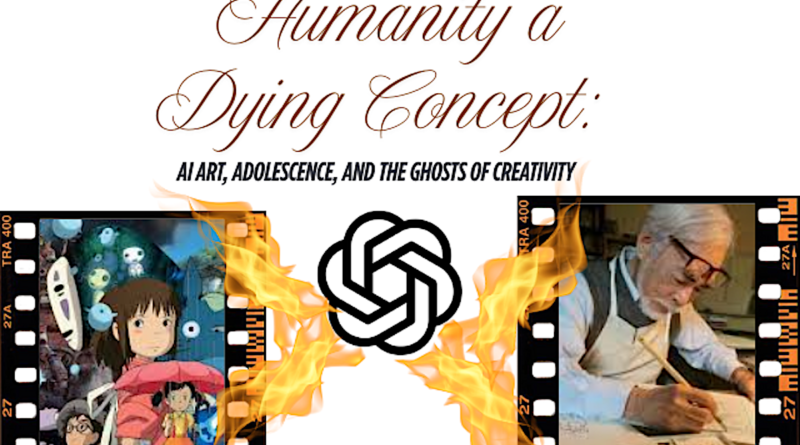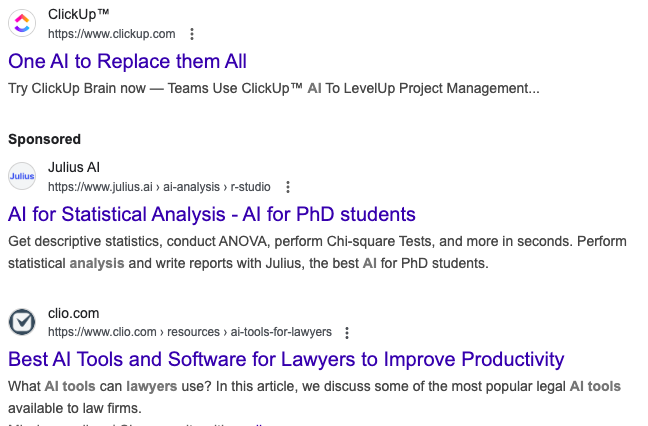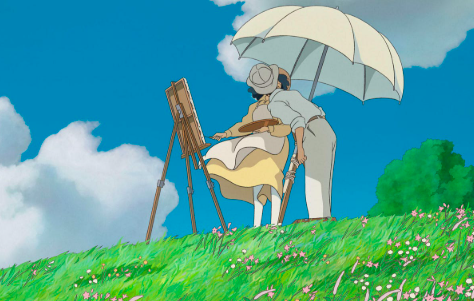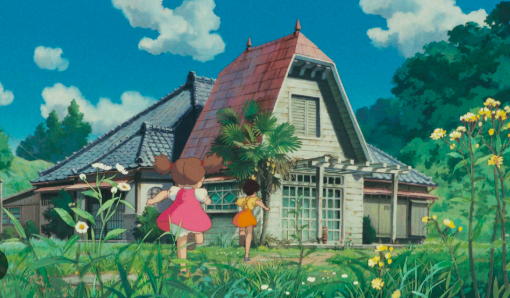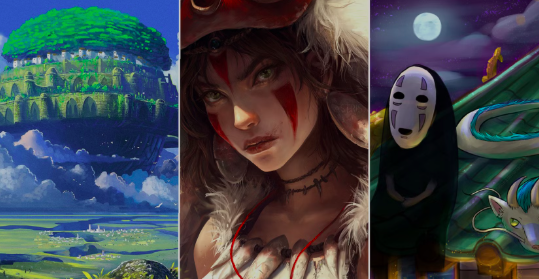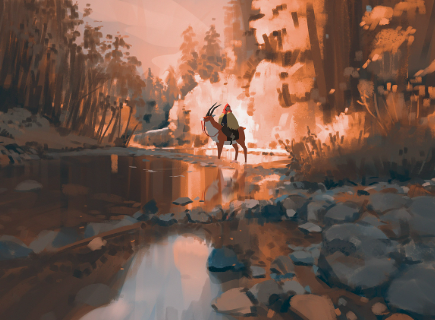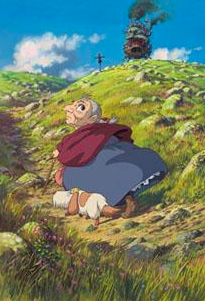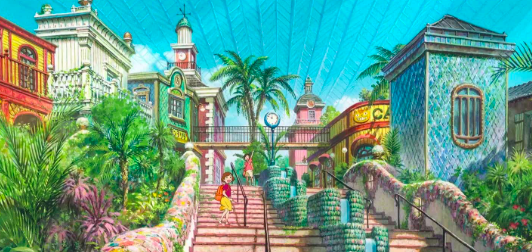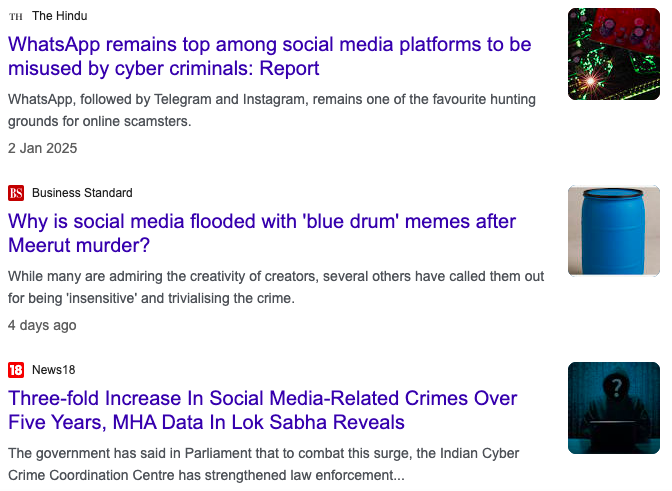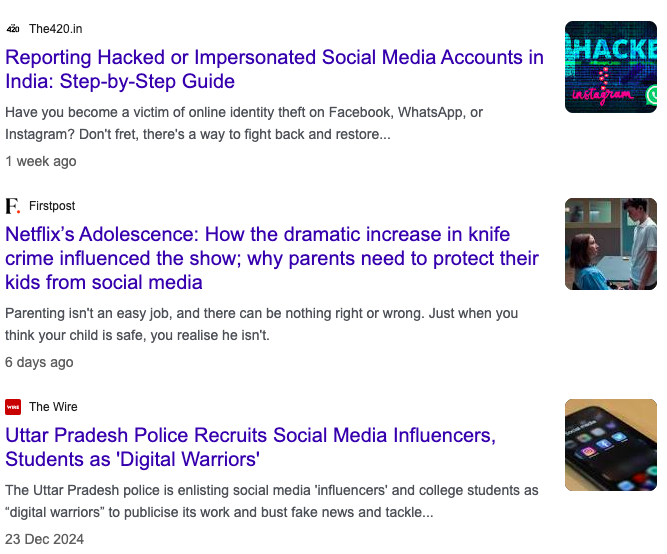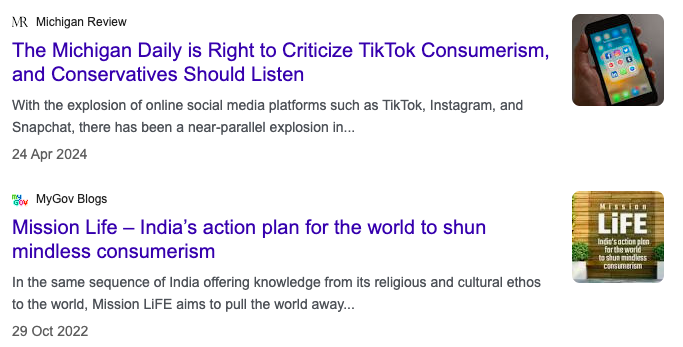Humanity a Dying Concept: AI Art, Adolescence, and the Ghosts of Creativity
The AI doomsday fear has resurfaced with the recent AI Studio Ghibli photo filter challenge, especially for artists. Are you one of those who feels- “What’s the big deal? It’s just a fun filter.” The filth creeping up on you unconsciously will stun you once you scrape the surface. How did you remain unaware of the danger poised to ruin you? The danger lurking behind the scene is similar to social media’s destructive effect on the 13-year-old Jamie Miller in the Netflix series Adolescence. The series is realistic enough to have jolted parents from their utopia that a kid at home is protected and safe from the violence, hatred and dangers of the world. The subtle changes that social media creates are hardly noticeable until it’s too late. Are we not digging our graves by turning a blind eye to the dangers of unregulated AI usage?
In the case of Studio Ghibli’s art challenge, it’s the slow yet steady descent of ethical and moral bar sacrificed at the altar of a quick, intoxicating high one gets from subscribing to trends, or the ego-boost on seeing ones pictures transformed into wide-eyed, smooth-skinned Ghibli style characters. Dig more, and an overload of venomous worms will crawl out.
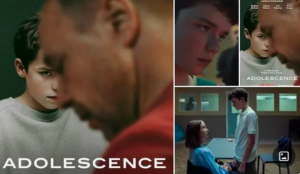
I remember the early days when we had just discovered the eye-popping images that Dalle could spring up. Almost at the same time, we stumbled upon Chat GPT, which could vomit lengthy, verbose texts when given a simple prompt. Won’t content creators and artists now become obsolete, I wondered. “Time to retire and do potato farming”, I thought, and even wrote a blog post expressing my fears. When I shared the post, some had commented with an “all is well” emoji, many had thought of it as a funny post, while most had dismissed it nonchalantly, thinking the technology was still in its infancy and world domination by AI was too fictitious.
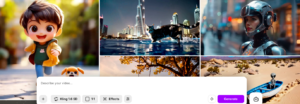
But soon, it was data analysts, legal professionals, and even doctors who started having existential questions. Then, everyone tried to pacify each other, saying humans cannot be replaced- AI is just an assistant enhancing productivity and efficiency. That was indeed the case. I, too started using AI tools in a collaborative way to enhance the output of my work. But then we were witness to the era of mass tech layoffs as businesses realized that the AI advancements allowed them to produce at scale without the need for so much manpower.
Yes, dangers like war, inflation, market downfall, vanishing jobs, Trump, etc, keep visiting us. As humans, our best way to deal with challenges is our resilience and the boon of a bad memory. Would a mother give birth to a second child if she remembered the pain of childbirth? Well no. Similarly, we can function by relegating memories of past trauma. Time is a healer. So, we forget and move on. In fact, most of us have tried to learn AI tools, incorporate them and stay relevant. We are trying out the peaceful co-existence route.
Yet, the unknown fear that AI possesses never dies. What’s scary is that I don’t even need an elephant’s memory to remember all the traumas AI has been causing and the head-spinning pace at which we are trying to cope with its evolution and adopt it to stay relevant.
That’s because the pre and post-AI invasion happened pretty instantly (less than 24 months), with surgical precision- too quickly to even feel the pain and realize the damage inflicted. We can no longer imagine a world without AI. It has seamlessly percolated into every industry and every aspect of our day-to-day lives. AI’s adoption has been swift and decisive. This is not to say that it hasn’t brought in gains. In fact, the enhancement in productivity and opportunity for scalability it has brought for businesses is groundbreaking. Just like any technology, AI isn’t good or evil by itself- its usage by human beings determines the course it takes.
I can safely say it’s more contagious than COVID-19, and yet we have no masks or guards to protect us against it. You might think I am being overly dramatic and paranoid without reason. Some of you might take offence that I’m comparing the havoc wreaked by COVID with something as innocuous and frivolous as AI-generated images. How can Humanity be threatened by a fun pic for our social media?
Let’s talk about the specifics and talk about the problem when AI replicates (or should I say plagiarises) Studio Ghibli’s legendary founder, Hayao Miyazaki’s style of art.
What’s the big deal? Isn’t imitation a form of appreciation? No, it’s called theft when done without permission. We have coerced this icon to suck it up while we carry out mass loot of his decade-long legacy of painstakingly hand-drawn artwork depicting human emotions and experiences, stroke by stroke, frame by frame.
He has been inspiring generations of artists with his evocative pieces which depict and elevate human beings’ lived experience through his unique style of artwork and animation. Are we honouring this icon with our actions? Here is what Hayao Miyazaki feels about AI.
“I strongly feel that this is an insult to life itself,” said Miyazaki about AI in a 2017 documentary. When he saw an experimental AI project by a few designers and animators, where a grotesquely disfigured being moved using its head and crawling. He spoke about how he remembered his differently-abled friend who couldn’t even do a high-five, and here was an animated AI-generated being moving with ease. The fact that the nightmarish AI entity seemed to have no understanding of the concept of human pain and moved with ease using its head was horrifying for Miyazaki.
Ghibli’s art form is not just about the final image—it is about the hands that drew it. It’s also about the dreams that shaped it and the essence of life that artists breathe into their work. With the Studio Ghibli filter, all it takes is a pre-existing photo. You just feed that to the AI app, which coughs up a forgettable piece (with no back story, no meticulously planned concept). The end result of this frenzy is the short-lived instant gratification that users derive from following a trend before another fab takes over.
Many Studio Ghibli fans and people in the art community are fuming, and for valid reasons. A lot of us have tumbled down this ego-gratifying path momentarily and feel utterly ashamed after realization sets in. Perhaps the only reprive from this guilt is empathizing and understanding how our actions affect another human being. Only then can we exercise caution before succumbing to mindless trends in the future. This controversy over AI-generated art mimicking the studio’s iconic style parallels the themes explored in the Netflix series Adolescence, which examines the dangers of social media and how the online manosphere is radicalizing vulnerable minds.
Social Media and the Manipulation of Identity
The Netflix series Adolescence serves as a cautionary tale about how online spaces influence young minds, shaping their perceptions, behaviors, and even their sense of self. Vulnerable individuals, bombarded by algorithm-driven content, often find themselves manipulated into adopting extreme ideologies without realizing the extent of their conditioning. The show highlights how social media when misused, strips people of authentic self-discovery and replaces it with programmed responses.
Now, contrast this with AI-generated art—slick, precise, yet disturbingly hollow. Just as the internet’s algorithmic bubbles manipulate identities and perceptions, AI art manipulates aesthetics without true creative struggle. It mimics human artistry but lacks the depth of human experience. AI-generated images are like minds shaped by online echo chambers—mechanically refined yet devoid of genuine soul and individuality.
The Ghibli AI Challenge: A Soulless Imitation
Studio Ghibli is renowned for its hand-drawn animation, its attention to detail, and the emotions woven into every frame. When AI-generated art attempted to mimic Ghibli’s signature style, it sparked outrage among artists and fans alike. Why? Because Ghibli’s magic lies not just in how its movies look, but in the stories behind their creation. It’s about the sweat, the inspiration, and the relentless pursuit of something personal and meaningful. AI, on the other hand, simply regurgitates patterns, relying on datasets built from the labor of real artists.
This challenge highlighted the ethical and artistic dangers of AI art. When an algorithm copies an artist’s unique style without their consent, it diminishes the years of practice, emotion, and lived experience that went into that art. It turns artistry into mere data points, stripping it of the humanity that made it meaningful in the first place.
In early 2023, artists such as illustrator Karla Ortiz and cartoonist Sarah Andersen initiated a class-action lawsuit against AI companies behind popular image generators, alleging that these tools “violate the rights of millions of artists” by using their work without consent and creating derivative content that competes with original creations.
The lawsuit highlighted how AI models are trained on billions of online artworks without permission. This allows companies to profit while artists receive no compensation and face potential loss of work opportunities. This case, along with similar lawsuits like Getty Images’ action against Stable Diffusion, could establish key precedents for AI art regulation, potentially mandating artist consent or implementing restrictions to protect intellectual property.
Beyond legal action, a growing cultural resistance is evident as many artists compare AI-generated content to “technological colonization”, where creative work is harvested without credit to fuel technologies that may eventually replace human artists. This concern is particularly pronounced in animation, where studios could use AI to automate background art or in-betweening, potentially threatening jobs.
While some artists recognize the potential of AI as a creative tool if governed ethically—such as requiring consent or licensing fees—the overwhelming sentiment remains that respect and consent should be central. As Hayao Miyazaki has vocally opposed AI mimicking human artistry, many argue that both legally and ethically, honoring the intent of artists is essential.
Why We Should Be Wary of AI-Generated Art
Beyond aesthetics, the rise of AI-generated images poses critical ethical questions. If AI can mass-produce “art” in seconds, what does this mean for aspiring artists? Will creativity be reduced to algorithmic outputs, devoid of the joy of discovery and self-expression? And who owns the art when it is trained on the work of thousands of human artists without their permission? Why are we trivializing our privacy and falling victim to the herd mentality? What happens to the pictures we willingly hand over to soulless, unregulated entities like AI? What is the value of such an artwork if anyone can generate it in a snap?
Much like Adolescence, which explores the dangers of mindless her-mentality, social media pressure, and algorithmic influence on human identity, the AI art debate forces us to ask many questions. Do we want a future where art is an effortless imitation, or do we value the messy, flawed, and deeply personal process of creation? When we admire a painting, an animation, or a character design, we are not just admiring technical skill—we are connecting with the soul behind it.
What’s Our Choice- Convenience, Comfort, Instant Gratification Over Value or Humanity
The charm of Studio Ghibli’s films and the legacy of all great art lies in their imperfections—the trembling brushstroke, the painstakingly drawn frame, the artist’s personal touch. AI-generated art, no matter how refined, will always lack this human spark. It’s devoid of the artist’s journey.
But are AI art or the Studio Ghibli art challenge the premise of this discussion? If we get past our myopic views, we will see that it’s also about gross and thoughtless consumption and commercialization. We don’t give any thought to the heavy price we have to pay in the long term. Hasn’t this unhinged consumerism set loose a vicious cycle of climate change? Most would think how can AI-generated images harm any one leave alone humanity? If we embrace AI-generated images uncritically, we risk losing more than just traditional artistry. We risk losing a part of ourselves. The question is, should we trade our creative soul and kindness that forms the crux of humanity for some cheap fun? Has our casual attitude to everything in life not cost us enough?
Our submission to technological colonization always starts in small, almost invisible ways. Let me illustrate the point with a few examples. We give in to the tantrums of a child and buy an iPhone as all his/her friends already have it. When we want things done easily we push a buck under the table. We let our minds get hijacked by the scroll culture as our relationships suffer. Where does the buck stop?

